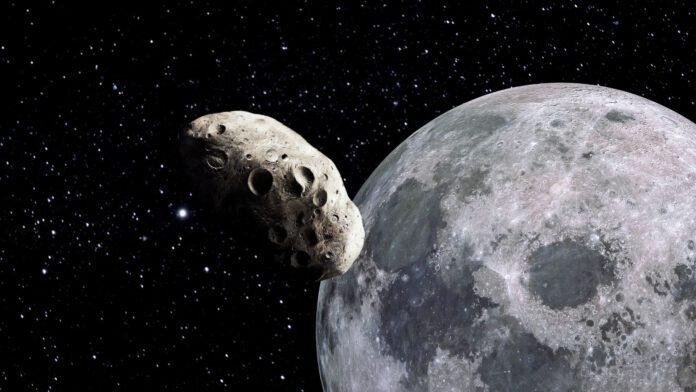
The origins of asteroid Kamo’oalewa
Asteroid Kamo’oalewa doesn’t have an exotic origin; it is, in fact, a piece of our moon. Astronomers have even been able to identify an area where this piece of space rock once resided peacefully beneath the lunar surface.
Discovering Kamo’oalewa
The asteroid Kamo’oalewa was discovered in 2016. It’s a quasi-satellite of the Earth, an asteroid which orbits the sun in the same time as our planet. Consequently, from the Earth’s surface, it appears as if Kamo’oalewa is orbiting our planet, while in reality it’s not. Measuring between 40 to 100 meters in diameter, Kamo’oalewa spins rapidly around its own axis.
Tracing the origins of Kamo’oalewa
So, where does Kamo’oalewa come from? In 2021, scientists discovered that the asteroid might have actually originated as a moon rock. To pinpoint the exact origin, a team of astronomers developed a computer model to simulate a lunar collision that could give birth to an object akin to Kamo’oalewa. Their findings pointed to a few surprising points. For example, Kamo’oalewa is relatively young and its chemical composition corresponds with lunar material collected from the Giordano Bruno crater. Additionally, both Kamo’oalewa and the moon piece from the Giordano Bruno crater contain the mineral pyroxene.
A theory about the birth of Kamo’oalewa
Scientists suspect that the asteroid was formed approximately four million years ago when a large meteorite struck the lunar surface, forming the 22 kilometer-wide Giordano Bruno crater. This theory also accounts for the current position of the object in relation to the earth and moon.
Curiosity around the Giordano Bruno crater
If you’re interested in the Giordano Bruno crater – it can be a bit tricky to spot from Earth. We always see the same side of the moon from our perspective on Earth. The crater lies, from this perspective, on the border of the “front” and “back” and is thus occasionally visible when the moon makes a swaying motion – a phenomenon that astronomers call libration.
Unfolding mysteries of Kamo’oalewa
While there is no hundred percent certainty that Kamo’oalewa is genuinely a piece of the moon, astronomers are fairly convinced of their findings. Future investigations may be able to find more evidence that Kamo’oalewa is, indeed, a piece of the moon. Surely this is a story to be continued!











